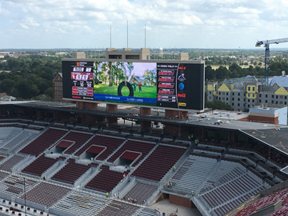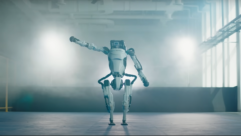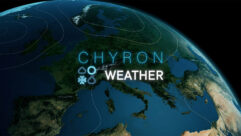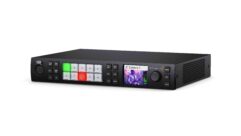
SVC Podcast – Show Notes – Show 163-2
In this edition of the SVC Podcast, SVC Contributing Editor Bennett Liles continues his talk with Perry Grave of Daktronics about the new 47ft. by 167ft. LED video display board recently installed in the renovated Gaylord Family-Oklahoma Memorial Stadium at the University of Oklahoma. Perry goes into the technology behind the new display and he explains the specifications. He details the backup capabilities built into the display and describes the new display installed in the Sooners’ weight room.
For Part 1
Links of interest:
- Daktronics, a leading manufacturer of outdoor LED video displays
- All Sport, RC-100 & OmniSport Control Consoles
- Daktronics Venus 1500 Learning Center – Content Management
Download Podcast Here:
https://s3.amazonaws.com/nb-svc/public/public/163-2_Daktronics_Oklahoma_…
This is the SVC Podcast from Sound & Video Contractor Magazine with Perry Grave of Daktronics. Show notes and equipment links for the podcast are on the web site of Sound & Video Contractor Magazine at svconline.com.
The University of Oklahoma Sooners just moved up in the world of stadium displays to the second largest one in college football. Perry Grave is here from Daktronics to finish up his story on how they got it planned, installed and tested in time for the first big home game of 2016. That’s up next on the SVC Podcast.
Perry, nice to have you back with us from Daktronics and we’ve been talking about the new end zone display at the University of Oklahoma’s Owen Field, also known as Gaylord Family-Oklahoma Memorial Stadium in Norman, Oklahoma. It’s actually wider than the football field and you can see it from miles and miles away at night.
Yeah. Yeah, we had people driving down the highway that reported seeing it in the town of Moore which is close to 30 miles north of the stadium.
What are the official specs on this thing? What are the actual measurements?
Sure. So the physical dimensions of the display are 46.8 feet tall by 166.8 feet wide. It’s 1092 pixels tall by 3,892 pixels wide. It’s on 13 millimeter line spacing. With this size it allows basically for two true 1080HD videos to be side-by-side on the board and the university actually uses it for that a lot of times during instant replays or pregame shows. They’ll put up other games, out of town games, one on each half, and show them when a crowd is coming in. So they make some pretty good use out of that. The average power this season is about 60,000 watts. Viewing angles are about 160 degrees on this board. It’s one of the things that’s really nice about this HD product is it gives you these real wide viewing angles. So where this board is located in the end zone – and when they renovated they actually brought it a little bit closer to the field which increased those viewing angles for some of the suite holders on the far south ends of the east and west sides. So it’s very important that we’re able to maximize those viewing angles to the stadium. [Timestamp: 2:15]
How does the 13HD compare to a 16, 20 & 26HD?
The biggest advantage for them to go at 13 on this project is to be able to get to 1080 without going extremely big physically on size. Just by bringing those lines closer together you can get to that number in a smaller footprint than you could with a 16, 20 or even a 26. So that was the biggest advantage that they got from using this technology. And the 13HD has kind of become our standard across the industry. Most NFL stadiums that have put in our product have gone with the 13HD. It just kind of maximizes that resolution pixel density that they’re looking for. [Timestamp: 2:57]
The games here are televised so I was curious as to what it would look like and I guess I’ll have the opportunity when I catch one of the games, when that display is seen through a video camera, especially one that’s panning like on the kickoffs. Have you had the opportunity to see what that looks like?
You know I have not seen this particular one on TV yet, but I’ve seen other 13HD product on TV at some other stadiums and it looks great. We’ve done a lot of research and development to get the refresh rates and everything to the point to where cameras don’t pick up some of the effects that you see like in the old days with computer screens and things like that. And it’s been an evolution over the years with slo-mo and super slo-mo cameras and that’s had to adapt with that. So I’m confident that it will look really good. And I’m not sure when this is going to air, but hopefully everybody will get a chance to see it this weekend when they play Ohio State. [Timestamp: 3:46]
Alright. I don’t know if we’ll be up by then but certainly by the weekend after that. I think as we record this the Sooners are one and one but at least they won their first home game and that was the display’s big debut so a happy outcome there. At some point you have to hand the keys over to the local stadium crew and let them run with it so what goes into the training of the crew to set this up and control it for the games?
Typically after a display is installed we’ll send in trainers to train on the control systems and we’ll also send in people to train on maintenance. Some facilities will take the responsibility to maintain their own displays. Others will rely on us to do it. But we still do a certain level of training just to give them familiarity with the boards and pieces like that. With this being an existing customer and having our product before, this training is simplified because they’ve already been familiar with our control system. They’re familiar with our product and how to service it. So in this particular instance the training period was abbreviated from what it was onsite where it was a new customer for Daktronics. [Timestamp: 4:55]
And I would think there are backups and secondary capabilities in there with some sort of dual connections that it can fail-over to if something happens.
Yeah. All of the control gear has a primary and a backup that are accessed through an AV switch so it’s as simple as flipping a switch. In the event that they should have a problem with one of the pieces they just flip the switch and they’re running on their backup. A system this size that ends up being pretty cheap insurance. [Timestamp: 5:20]
I was thinking about that and you mentioned the catwalks and you made sure that that they were built into the right places for the tech people to access the display structure. I’d really love to see what it looks like on the inside.
You might be impressed when you look in there. It’s simpler than you think. Each module has three connections on it; a power cable, a data in, and a data out. So it makes it really simple for people to go in and swap out parts. [Timestamp: 5:44]
There was a great deal of coordination with other trades because this is part of a much bigger renovation project for that stadium so there was a lot a stuff going on in there in addition to what your crew was doing.
Correct. It’s still a process ongoing. This was kind of the first step of getting complete for the season. There’s still some back of house things that were not scheduled to be complete until March – locker rooms, weight rooms, front offices – those types of areas. [Timestamp: 6:08]
Yes. Didn’t you also put a big display in their new weight room?
Correct. That is something kind of new that we’re seeing a lot more of. But inside their weight room training area we’re putting in an LED board that’s roughly 10 feet by 36 feet. And the intention there is they’ll run TV programs on there. They can put up training schedules and update those daily and kind of make them interactive as well with the touchscreen panel that will be mounted to the wall. Where players come in and they can kind of punch in their name and ID and it will pull up their training schedule and put it up on the screen for them. So that’s something that’s going to be kind of neat when we get that all up and running. And then to be able to put multiple TV programs up on it at a time as they’re going through their training schedule. [Timestamp: 6:50]
Well, that’s a good bit of work out there ahead of you so what have you got coming up on these big stadium displays?
Well right now this is kind of a period where we’re going out and getting some of these contracts firmed. So typically we don’t get our firm contracts up for stadiums until December, January, February time period. So we’ve got a lot of things that we’re going after right now and we’re just looking forward to that time and hopefully we can get some of those locked up for this fall and early spring for next year. [Timestamp: 7:18]
And with the level of facilities competition that exists between these college football operations, I think you’re going to have your work cut out for you.
Yes. Yes. But that’s good. We love to be challenged.
Very good hearing about what goes into these projects. I’ll be thinking about this the next time I see a Sooners home game. It’s Perry Grave from Daktronics and the new University of Oklahoma end zone display over a hundred and sixty feet wide. Thanks for giving us the story on it.
Thank you, Bennett. Appreciate your time.
Thanks to Perry Grave of Daktronics and to you for joining us for the podcast. Show notes and equipment links are on the website of Sound & Video Contractor Magazine at svconline.com. Be back with us next week for the SVC Podcast.










